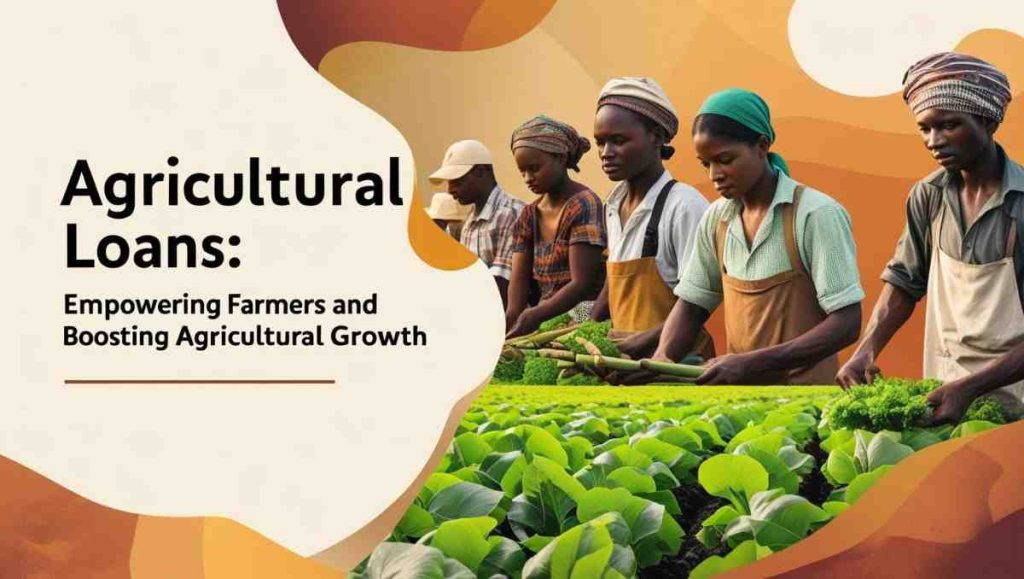AGRICULTURAL LOANS: EMPOWERING FARMERS AND BOOSTING AGRICULTURAL GROWTH.

Agriculture is the backbone of many economies, providing food, employment, and income for millions of people around the world. However, farming is a complex and often capital-intensive endeavor, requiring significant investments in equipment, seeds, fertilizers, and labor. For many farmers, accessing financing can be a major challenge, which is why we introduce Agricultural loans at VALDYMAS ENTERPRENEURIALAND TRANSFORMATIONAL LEADERSHIP EMPOWERMENT PROGRAM (VETLEP).
WHAT ARE AGRICULTURAL LOANS?
Agricultural loans are specialized financial products designed to support farmers and agricultural businesses. These loans can be used to cover a wide range of expenses, including:
- Purchasing equipment and machinery: Tractors, plows, and other equipment are essential for farming, but can be expensive. Agricultural loans can help farmers acquire the equipment they need.
- Buying seeds and fertilizers: High-quality seeds and fertilizers are crucial for crop yields. Agricultural loans can help farmers purchase these inputs.
- Hiring labor: Farming often requires additional labor, especially during peak seasons. Agricultural loans can help farmers hire the workers they need.
- Expanding operations: Agricultural loans can help farmers expand their operations, whether it’s by buying more land or increasing their livestock herd.
TYPES OF AGRICULTURAL LOANS
There are several types of agricultural loans available, including:
- Short-term loans: These loans are typically used to cover immediate expenses, such as purchasing seeds and fertilizers.
- Long-term loans: These loans are used to finance larger investments, such as purchasing equipment or expanding operations.
- Crop loans: These loans are specifically designed for farmers who need financing to plant and harvest crops.
Livestock loans:
BENEFITS OF AGRICULTURAL LOANS
Agricultural loans can provide numerous benefits to farmers and agricultural businesses, including:
- Increased productivity: By providing access to financing, agricultural loans can help farmers increase their productivity and yields.
- Improved efficiency: Agricultural loans can help farmers invest in equipment and technology that improves efficiency and reduces labor costs.
- Increased income: By providing financing for inputs and equipment, agricultural loans can help farmers increase their income and improve their livelihoods.
Businesses and employees must remain vigilant and adopt cybersecurity best practices to safeguard sensitive information.
CHALLENGES AND LIMITATIONS
While agricultural loans can be beneficial, there are also challenges and limitations to consider, including:
- High interest rates: Agricultural loans can have high interest rates, making them expensive for farmers.
- Collateral requirements: Many agricultural loans require collateral, which can be a challenge for farmers who don’t have sufficient assets.
- Risk of default: Agricultural loans can be risky, especially if crops fail or livestock become ill.
Conclusion
Agricultural loans are an essential tool for farmers and agricultural businesses, providing access to financing that can help them grow and thrive. By understanding the different types of agricultural loans available and the benefits and challenges associated with them, farmers can make informed decisions about their financing options. By providing access to financing and resources, agricultural loans can help farmers and agricultural businesses succeed and contribute to a more sustainable and food-secure future.
References
- Food and Agriculture Organization of the United Nations (FAO). (2019). The state of food and agriculture 2019. Moving forward on food loss and waste reduction.
- World Bank. (2020). Agriculture and Food.
- International Fund for Agricultural Development (IFAD). (2019). Rural Development Report 2019: Creating opportunities for rural youth.



